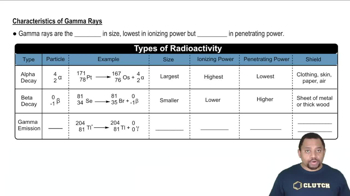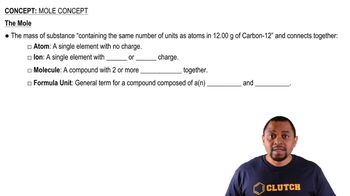Here are the essential concepts you must grasp in order to answer the question correctly.
X-ray Emission
X-ray emission occurs when an electron transitions between energy levels in an atom, releasing energy in the form of X-rays. In the case of copper, the Ka transition refers to the movement of an electron from the 2p orbital to fill a vacancy in the 1s orbital, resulting in the emission of X-rays with a specific energy characteristic of the element.
Recommended video:
Characteristics of Gamma Rays
Energy-Wavelength Relationship
The energy of a photon is inversely related to its wavelength, described by the equation E = hc/λ, where E is energy, h is Planck's constant, c is the speed of light, and λ is the wavelength. This relationship allows for the calculation of the wavelength of emitted X-rays when the energy is known, highlighting the fundamental connection between energy and electromagnetic radiation.
Recommended video:
Frequency-Wavelength Relationship
Mole Concept and Energy Conversion
The mole concept is essential in chemistry for quantifying substances. When dealing with energy given off by a mole of atoms, it is crucial to convert the energy from kJ to joules (1 kJ = 1000 J) to use in calculations. This conversion is necessary to apply the energy-wavelength relationship accurately and derive the wavelength of the emitted X-rays.
Recommended video:

 Verified step by step guidance
Verified step by step guidance


